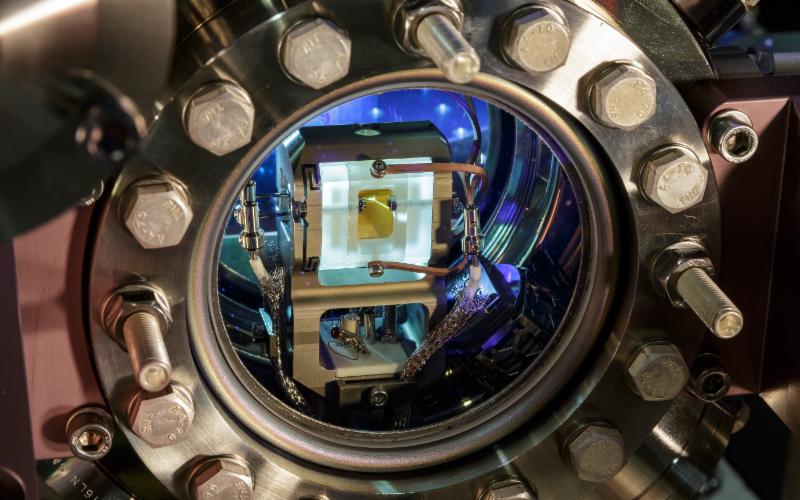- The Institute for Quantum Optics and Quantum Information at the University of Innsbruck, Austria has chosen a Spectrum Arbitrary Waveform Generator (AWG) to generate a variety of signals for their research.
- Because of the variety of experiments that it would be used for, it was important to have an AWG that is possible to program using a PC so that the output could be customised to each use.
- A Spectrum Instrumentation M4i.6631-x8 was selected because, being on a PCI Express card, it could be incorporated into a PC and directly driven by it.
“It is highly configurable,” Christine Maier, a researcher at the Institute, explained. “Two AWG channels, a choice of trigger options, external clock inputs, multiple and gated replay modes, looping functions, and even the possibility to combine two trigger inputs via logic gates. This combined with the high resolution and a sampling rate of 1.25 GS/s made it the logical choice to provide the flexibility for the projects that we have now and, importantly, whatever needs we may have in the future with just one instrument.”
The first application is applying a multiple-frequency signal in the radio frequency regime. Each frequency component is realised using a sinusoidal function. The resulting beat signal is used to simultaneously address individual ions in a trapped-ion quantum simulator.
Christine Maier added, “We are doing the quantum simulation with trapped, cooled calcium ions and need to address each individual ion in a linear string. To achieve this, we send a laser beam through an acousto-optic deflector (AOD). The frequency of the radio frequency signal defines the deflection angle of the laser beam and thus which ion is addressed. The AWG allows us to produce multiple-frequency signals so that we can now address multiple ions in the string simultaneously. One advantage of this is that the experiment is faster because we don’t need to cycle through addressing each ion individually. But it also opens up an entirely new field of study for us as, up to now, we could only investigate unperturbed energy transport in our ion chain. However, by addressing individual ions with arbitrary strength, we now can create arbitrary potential barriers and study energy transport in disordered quantum systems. The AWG even allows us to program time-varying potentials to study dynamic disorder phenomena.”
The second application is the cancellation, via destructive interference, of undesired frequency mixing terms that arise, for example, when applying multiple-frequency signals to an acousto-optic modulator. “Applying RF signals to acousto-optic crystals is a basic technique in our laboratories,” she said. “When applying multiple-frequency signals, several sum- and difference-frequency components will arise and finally map onto the optical signal that you are sending onto the ions. This brings two problems. First, you lose power from the frequency components that you actually want and second, the mixing terms could hit some resonance frequencies of the ion chain and destroy the quantum model that you want to simulate. The AWG enables us to cancel these undesired terms via destructive interference in real-time measurement and feedback loops.”







